Overview
The article emphasizes the critical remote work tools that drive startup success, spotlighting ten specific tools that significantly enhance productivity, communication, and project management. Each tool, including Casy, Slack, and Zoom, is examined for its distinctive features and benefits, illustrating how they streamline operations and foster collaboration. This ultimately boosts the effectiveness of remote teams within a startup environment.
How do these tools transform daily operations? By leveraging their unique capabilities, startups can overcome challenges and optimize their workflows, paving the way for sustainable growth.
Introduction
Navigating the complexities of remote work presents a significant challenge for startups aiming for success. The vast array of tools available makes finding the right combination essential, as it can dramatically enhance productivity, streamline communication, and foster collaboration among teams. This article delves into ten essential remote work tools that not only simplify operations but also empower startups to thrive in a competitive landscape.
How can these tools fundamentally transform the way teams collaborate and drive innovation within the ever-evolving startup ecosystem?
Casy: Automate Task Management and Enhance Team Productivity
Casy operates as an invisible project manager, seamlessly integrating with popular chat platforms such as Slack and Telegram. By automatically capturing essential information from discussions, it generates assignments and establishes deadlines without the need for manual input. This level of automation significantly reduces the administrative burden on teams, allowing them to concentrate on their core tasks and enhancing overall productivity.
With features like planning and task categorization, Casy ensures that teams maintain visibility and prioritize effectively. Have you considered how much time your team spends on coordination? Companies utilizing Casy have reported improved workflow efficiency, as evidenced by case studies showing a decrease in coordination costs and an increased focus on innovation.
As Stephen Covey wisely stated, technology should serve the task, not dictate it. Casy exemplifies this principle by streamlining processes. By automating task management, Casy empowers remote teams to achieve greater success in their projects, making it one of the essential remote work tools for new ventures navigating the complexities of remote work.
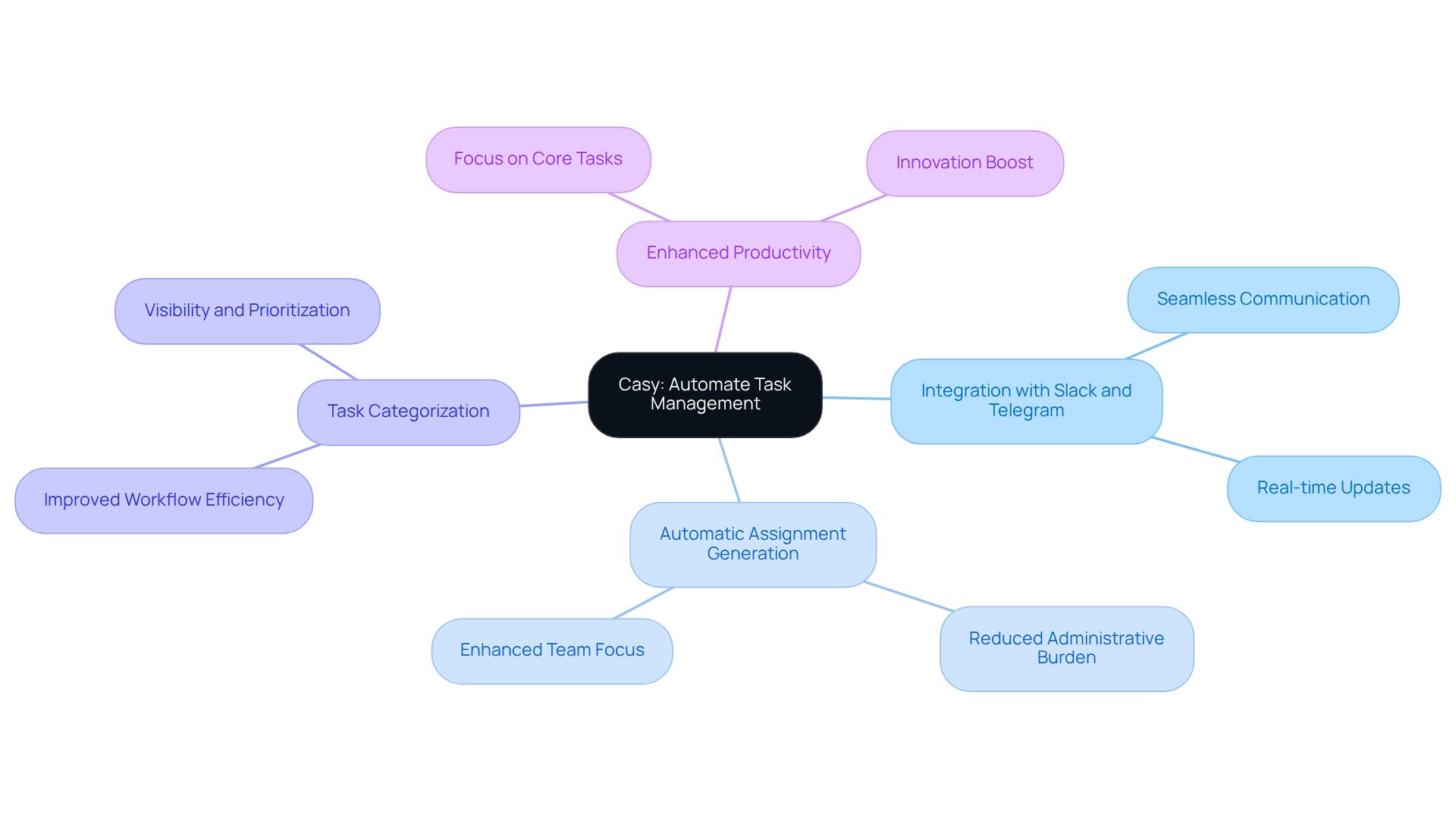
Slack: Streamline Communication for Remote Teams
Slack facilitates real-time communication through channels, direct messages, and seamless integrations with over 2,400 third-party applications, significantly reducing email clutter. This streamlined approach is crucial for startups that require agility and quick decision-making. With features like file sharing, searchable message history, and customizable notifications, Slack not only improves collaboration but also ensures that all group members stay aligned and informed. Notably, 77% of Slack users report increased organizational transparency, and the platform has demonstrated a remarkable 338% ROI for organizations.
As remote teams increasingly depend on digital communication, Slack's latest features, including improved automation and AI capabilities, are poised to further enhance collaboration and productivity through the use of remote work tools in 2025. However, how can teams manage notification fatigue effectively? Utilizing features like 'Do Not Disturb' mode is essential to promote respect for personal time, a point emphasized by experts in the field. By leveraging remote work tools, startup founders can create a more productive and respectful work environment.
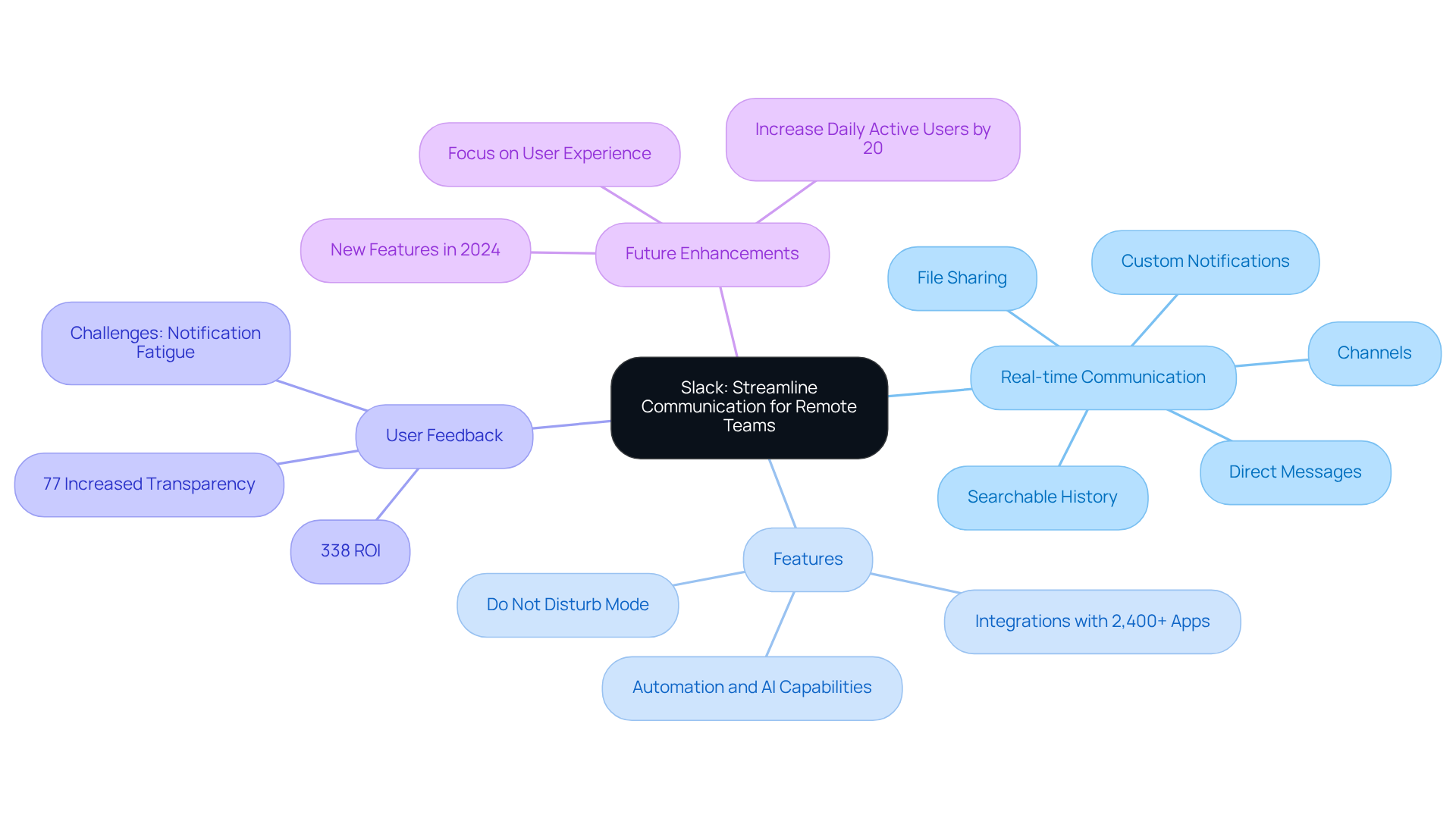
Zoom: Facilitate Virtual Meetings and Collaboration
Zoom serves as a fundamental platform for video conferencing, enabling groups to conduct meetings, webinars, and collaborative sessions seamlessly, regardless of their physical locations. Its robust features, such as screen sharing and breakout rooms, promote interactive discussions and brainstorming—vital components for sustaining engagement and productivity. For emerging businesses, leveraging Zoom not only helps maintain a vibrant team culture but also ensures alignment on objectives and projects. With 94% of companies recognizing productivity as the primary benefit of video conferencing, startups can significantly enhance their collaborative efforts through effective virtual meeting strategies.
The COVID-19 pandemic has accelerated the adoption of video conferencing, with 30% of global companies utilizing it for the first time, underscoring the increasing dependence on tools like Zoom. Furthermore, during the pandemic, 70% of full-time employees in the U.S. worked from home, emphasizing the critical role of platforms like Zoom in facilitating this transition. As the video conferencing market is projected to reach $13.82 billion by 2023, utilizing remote work tools like Zoom is essential for fostering communication and collaboration, ultimately driving success in the startup landscape.
Moreover, 90% of users report that video helps them feel connected, highlighting the emotional and relational benefits of using Zoom for group collaboration. How can you harness this potential to elevate your team's performance? The evidence is clear: adopting effective virtual meeting strategies not only enhances productivity but also strengthens team dynamics.
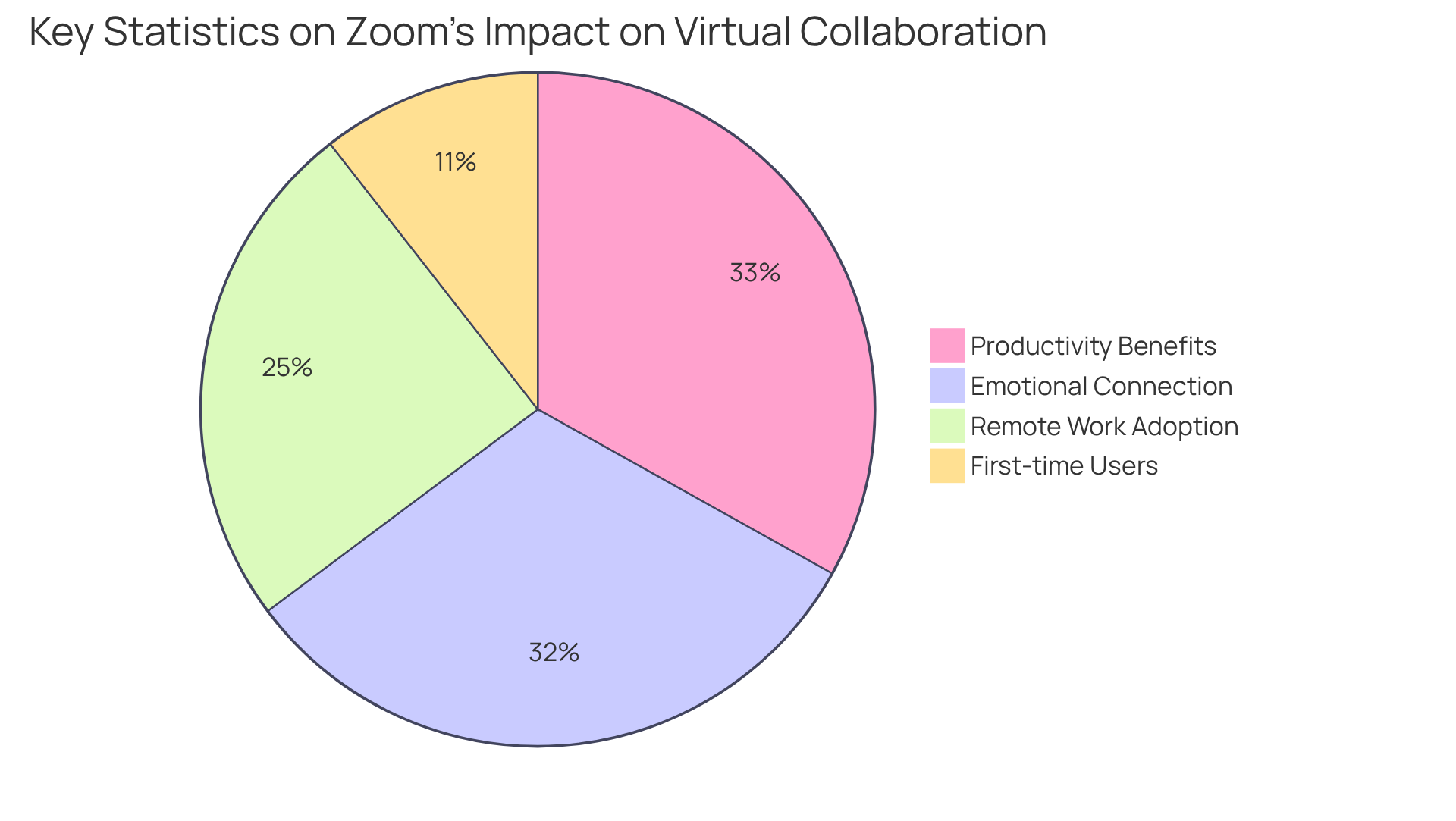
Asana: Organize Projects and Tasks for Clarity
Asana empowers teams to create projects, allocate responsibilities, and establish deadlines, providing a comprehensive overview of ongoing work. With its user-friendly interface and customizable workflows, teams can prioritize tasks and effectively monitor progress.
Have you considered how remote work tools such as Asana can streamline your operations? For new businesses, leveraging Asana ensures that every team member is aware of their responsibilities and deadlines, significantly reducing the risk of miscommunication and task overload. This clarity not only enhances productivity but also fosters a collaborative environment where everyone is aligned towards common goals.
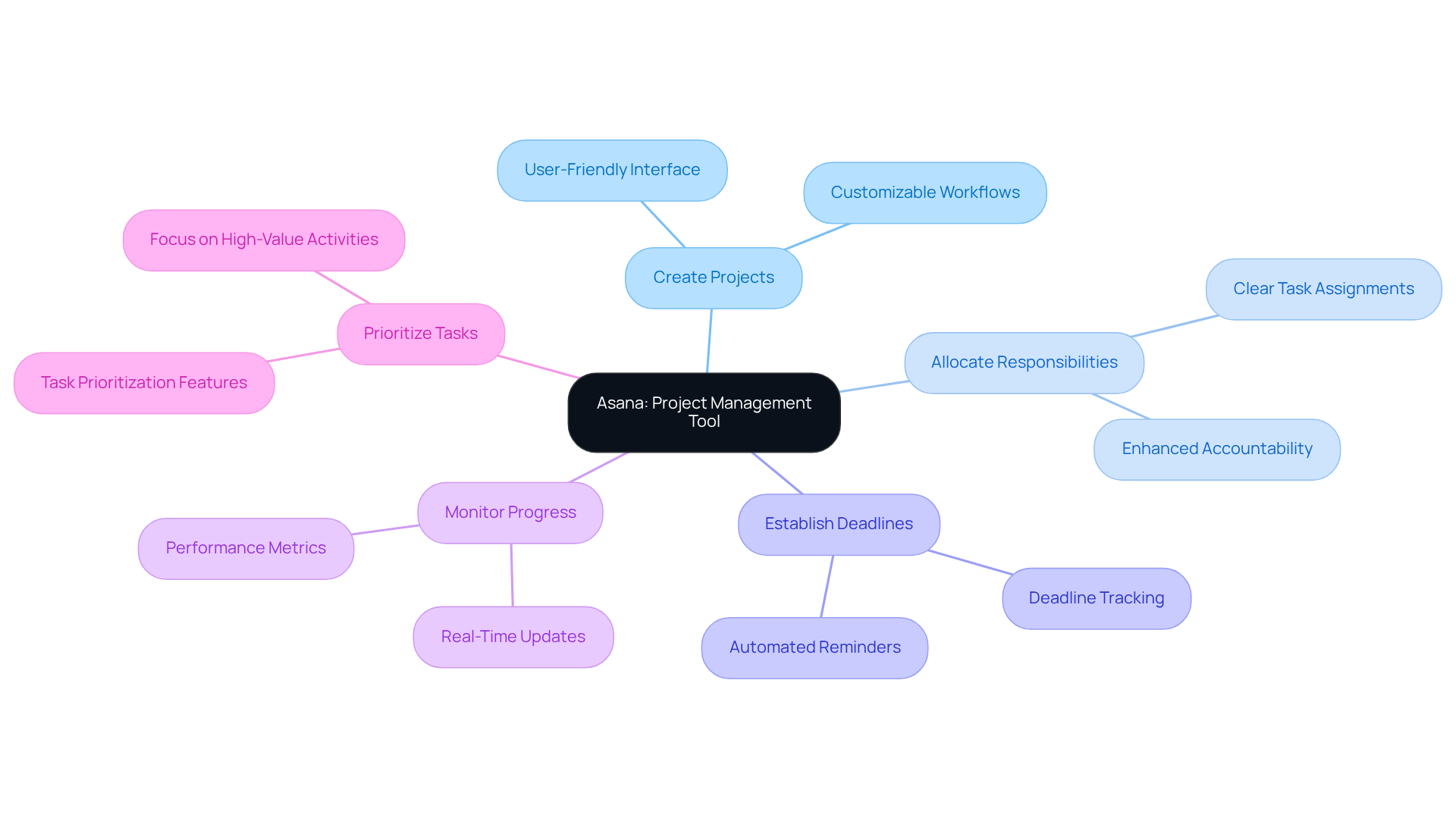
Google Drive: Share and Collaborate on Documents Seamlessly
Google Drive is one of the powerful remote work tools that enables groups to store, share, and collaborate on documents in real-time, making it an indispensable resource for new businesses. With features such as comments and version history, group members can provide feedback and make edits simultaneously, ensuring alignment with the latest updates. This capability is vital for startups that thrive on rapid iterations and collaborative input, as it enhances communication and minimizes the risk of miscommunication. Notably, 83% of workers reported that effective remote work tools significantly enhanced their productivity.
Moreover, Google Drive's innovative 'Catch me up' feature, powered by Gemini AI, summarizes changes made to shared files, further streamlining collaboration. By facilitating effortless document sharing and real-time collaboration, Google Drive is one of the key remote work tools that not only optimizes workflows but also cultivates a culture of innovation and adaptability among teams. Are you ready to elevate your startup's collaborative efforts? Embrace Google Drive and witness the transformation in your team's productivity.
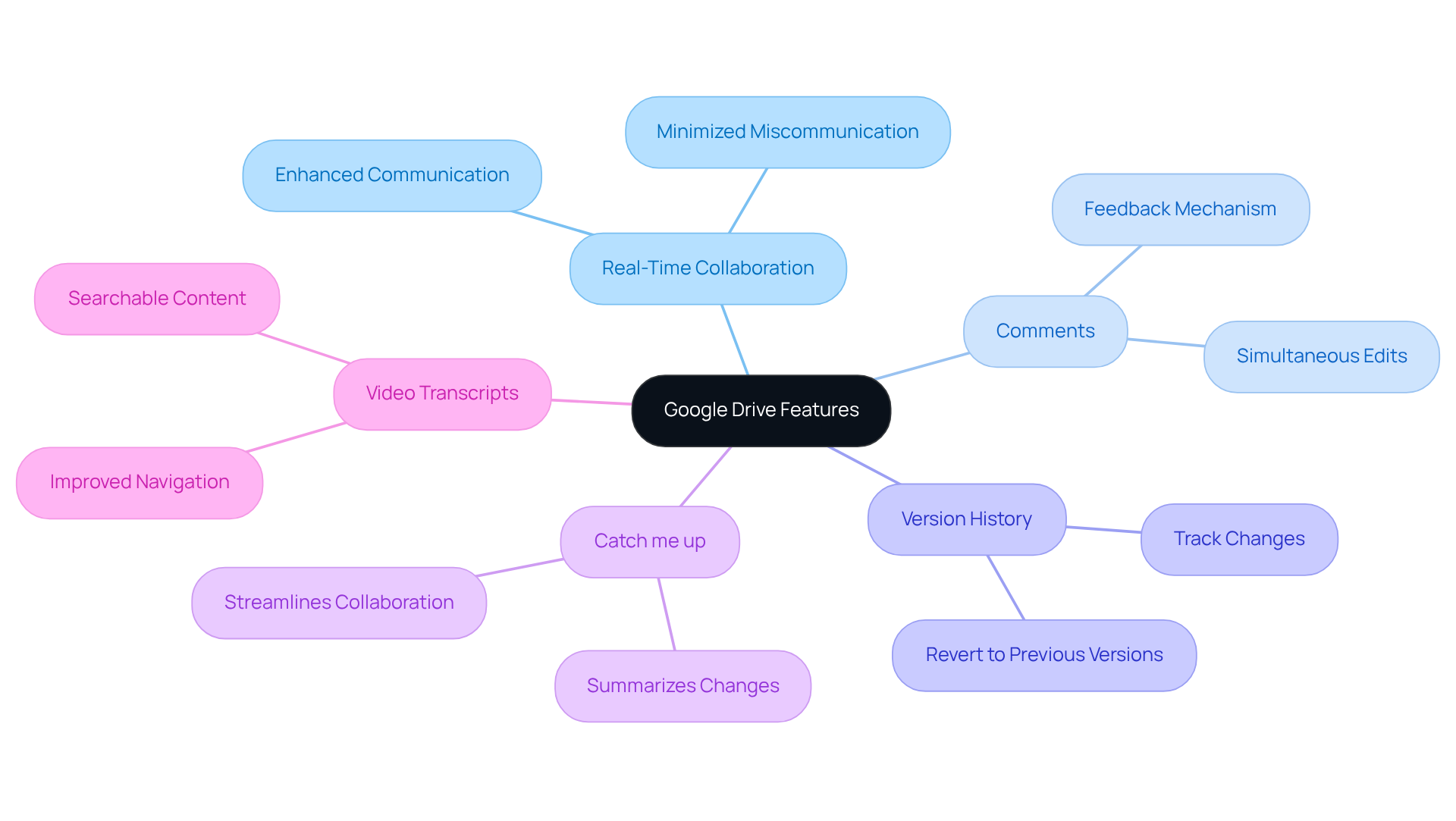
Trello: Visualize and Manage Tasks with Boards
Trello's board and card system empowers teams to visualize their workflows and manage activities with remarkable ease. By creating dedicated boards for various assignments and adding cards for specific tasks, users can seamlessly transition these cards through different stages of completion. This visual representation not only allows for quick evaluations of task status but also aids in effectively prioritizing work. For startups, this clarity is essential, as it enhances operational efficiency and cultivates a more organized approach to project management.
With innovative features such as the new Inbox for capturing activities from multiple sources, Trello ensures that teams remain focused and efficient, ultimately driving success in their initiatives. Notably, 65% of knowledge workers end each day with numerous items still on their to-do lists, underscoring the need for effective remote work tools to manage their tasks. Furthermore, Trello's AI capabilities can extract due dates, priorities, and action items from various sources, significantly boosting productivity.
As Gaurav Kataria asserts, it is time to elevate personal productivity with Trello, positioning it as an indispensable tool for startups managing multiple projects. The card mirroring feature allows a single task card to appear on various boards, enhancing collaboration across teams. This combination of features not only addresses the challenges faced by startup founders but also provides a pathway to improved workflow management.
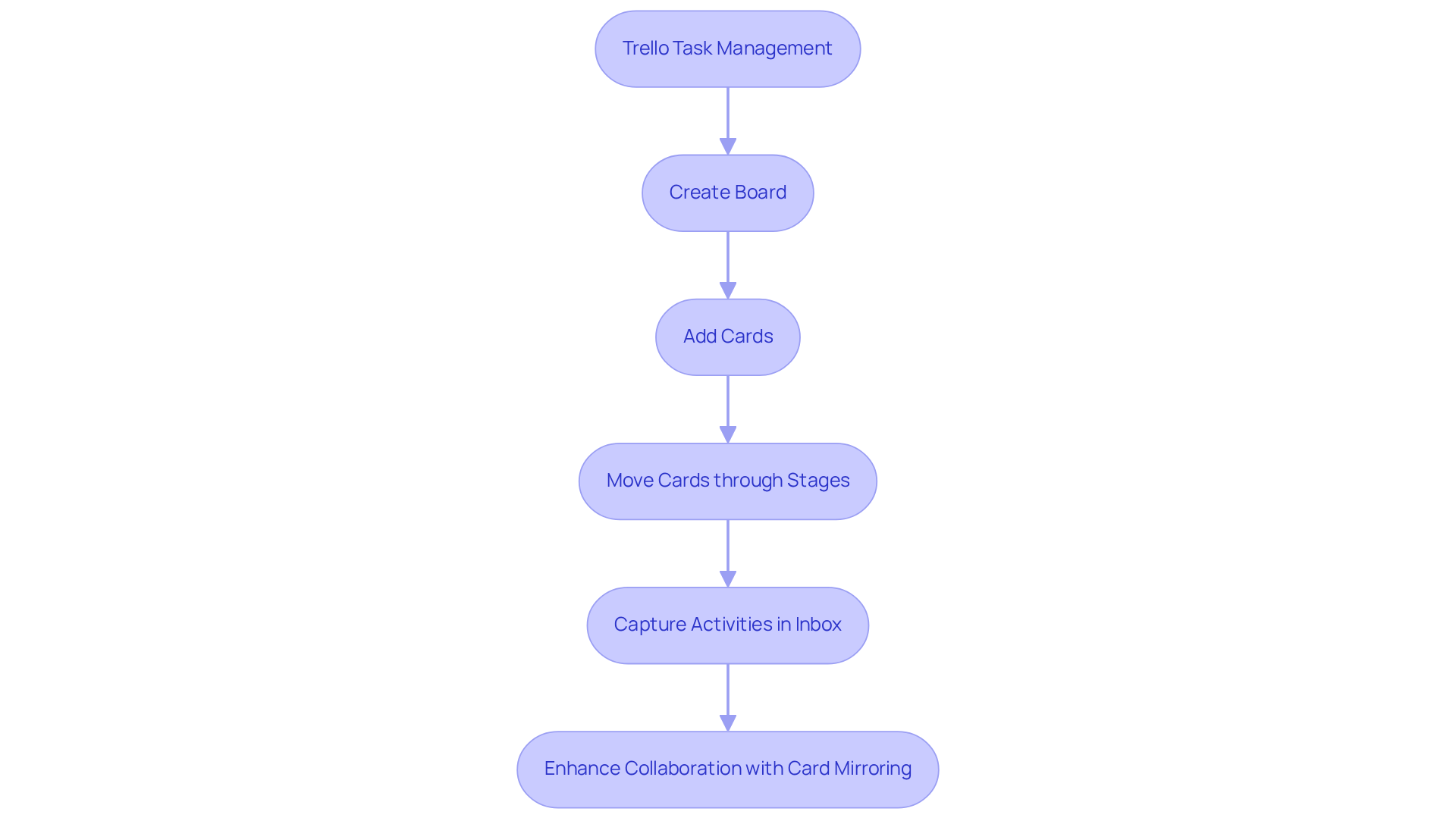
Miro: Collaborate Visually with Interactive Whiteboards
Miro presents a revolutionary interactive whiteboard that empowers groups to brainstorm, plan, and collaborate visually, irrespective of their physical location. With features such as sticky notes, diagrams, and an extensive array of templates, it fosters creative problem-solving sessions that can significantly enhance group dynamics. Startups, in particular, deem Miro indispensable for idea generation and aligning team members on objectives. Initial user feedback indicates that Miro's Innovation Workspace has led to a 15% reduction in timelines and a 20% increase in cross-functional collaboration, underscoring its effectiveness in boosting creativity and productivity.
Moreover, Miro's integration with Adobe Express streamlines the creative process, enabling the production of high-quality visuals. While Miro excels in visual collaboration, it is crucial to recognize that it enhances specialized management tools rather than replacing them. As remote teams confront the hurdles of collaboration, Miro's remote work tools emerge as essential for amplifying collective creativity and engagement. This makes it an invaluable asset for new businesses striving for success in a competitive landscape.
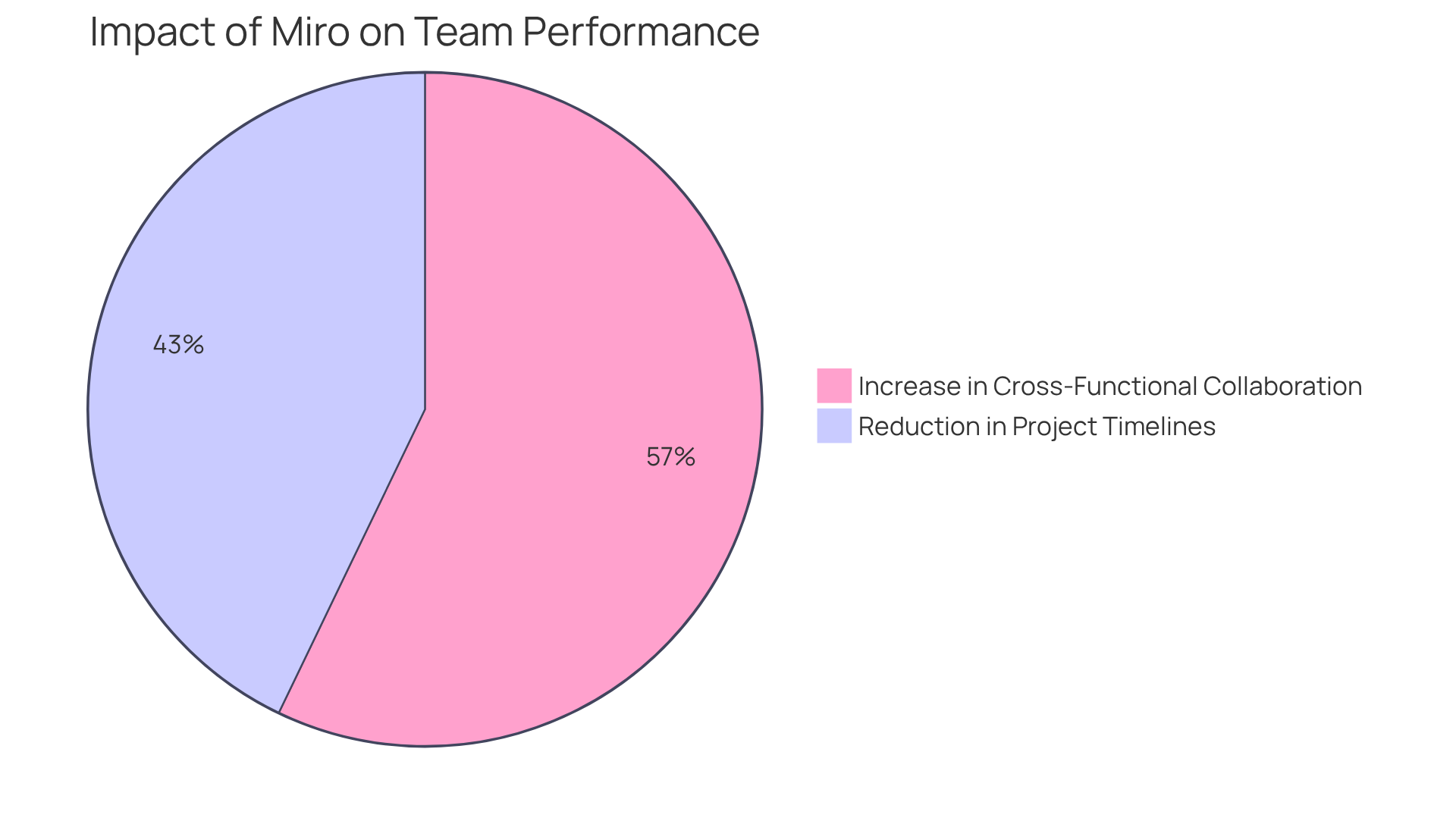
Notion: Centralize Notes and Tasks for Better Organization
Notion empowers groups to establish a centralized workspace, streamlining the organization of notes, activities, and projects with remarkable ease. Its adaptable design allows users to customize their environment according to specific needs, facilitating efficient information tracking and enhancing collaboration. For startups, this centralized approach significantly bolsters organization, ensuring that all members have immediate access to essential information. With over 30 million users, including 4 million paying subscribers, Notion's enhancements for 2025 continue to refine management capabilities, positioning it as an indispensable option among remote work tools for teams.
The platform's ability to streamline workflows and enhance communication is vital for sustaining productivity in fast-paced environments. As Nashilu Mouen-Makoua noted, 'Our group tripled in size this past year, and remote work tools like Notion enabled us to maintain all information centralized and swiftly accessible,' underscoring the critical role of organization in remote group dynamics. Furthermore, Notion's integration with tools like Google Calendar significantly boosts its utility, allowing new businesses to manage their schedules and tasks more effectively. Are you ready to transform your team's organization and productivity with Notion?
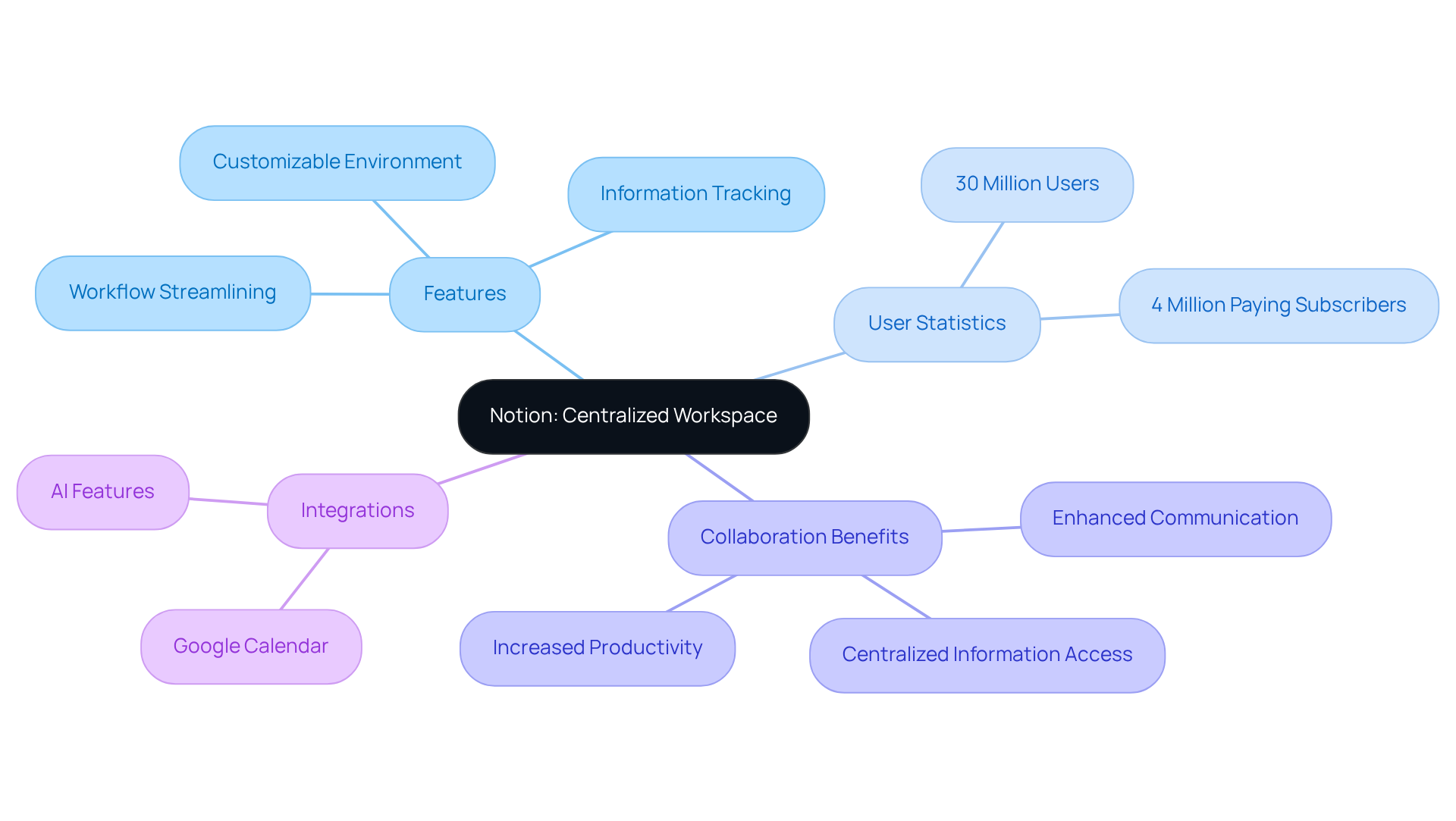
Microsoft Teams: All-in-One Collaboration Platform
Microsoft Teams stands out as a powerful all-in-one collaboration platform, seamlessly integrating chat, video conferencing, and file sharing. This consolidation empowers groups to collaborate efficiently, eliminating the inconvenience of juggling multiple tools. With over 320 million monthly active users as of 2025, its deep integration with Microsoft Office applications significantly enhances productivity, allowing users to edit documents directly within the platform.
For startups, Microsoft Teams serves as one of the essential remote work tools by streamlining communication and boosting overall efficiency. Consider the adjustable alerts and message organization capabilities; these features enable teams to manage their workflows more effectively, leading to improved task prioritization and reduced interruptions.
Furthermore, the platform's flexible membership feature allows teams to swiftly adapt to evolving needs, driving productivity and innovation in a fast-paced environment. Isn't it time to leverage such a transformative tool to elevate your startup's collaborative efforts?
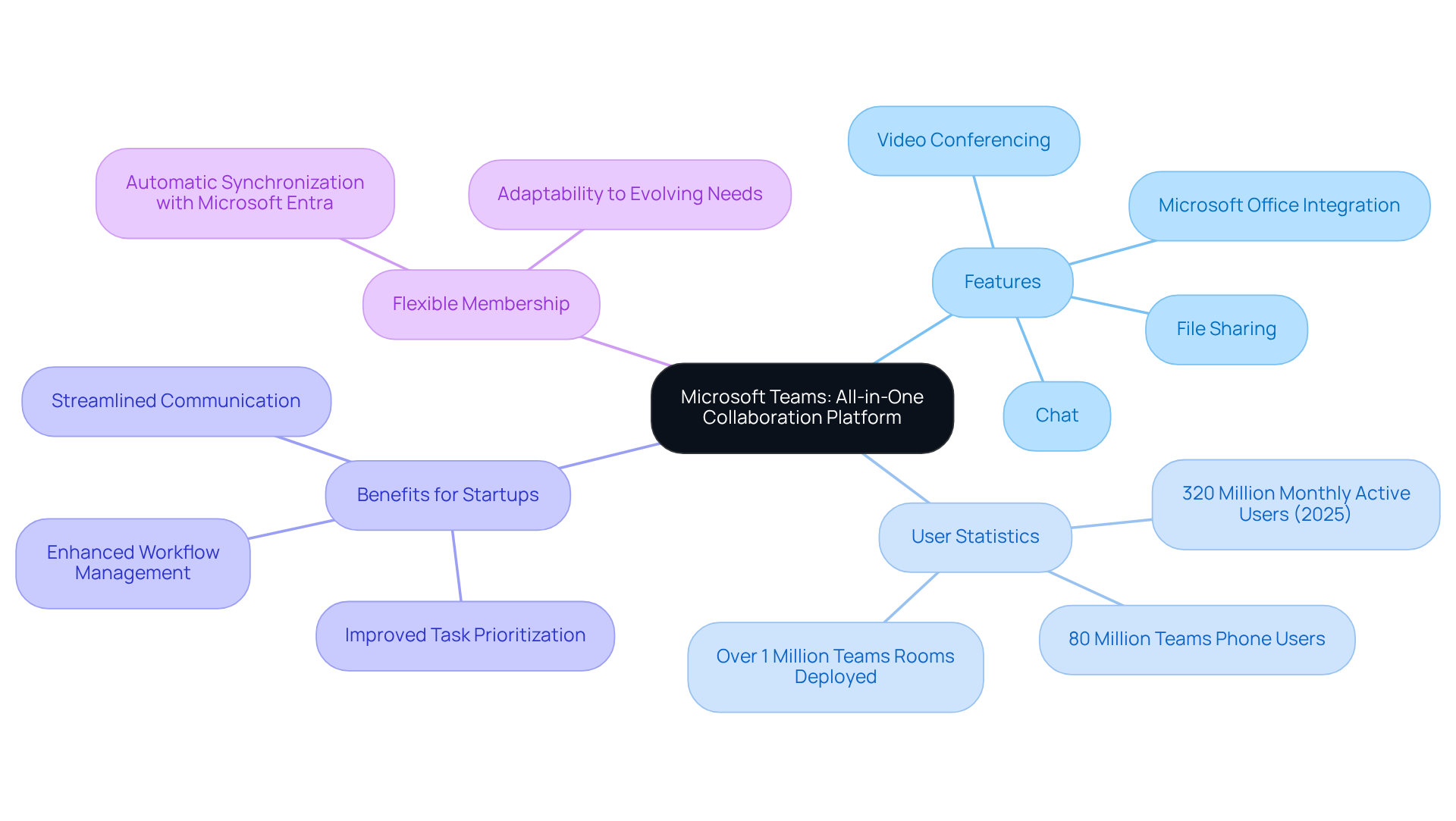
Harvest: Track Time and Manage Project Timelines
Harvest empowers teams to meticulously monitor the time spent on tasks and initiatives, yielding critical insights into productivity and resource allocation. Its robust features, including invoicing and detailed reporting, enable new businesses to manage budgets and timelines with precision. By utilizing Harvest, startups can ensure that initiatives stay on track and that resources are allocated effectively, ultimately enhancing profitability.
Have you considered how understanding your time allocation can lead to improvements? As one group observed, "By comprehending how our time is allocated, we’ve pinpointed areas for enhancement and boosted profitability of our initiatives."
Furthermore, 57% of firms have a defined profit margin target for projects, underscoring the importance of effective time tracking. Additionally, Harvest’s invoicing features bring efficiency and professionalism to the billing process, simplifying financial management for new businesses and allowing them to focus on client work. This capability is essential for startups aiming to optimize their operations and achieve sustainable growth.
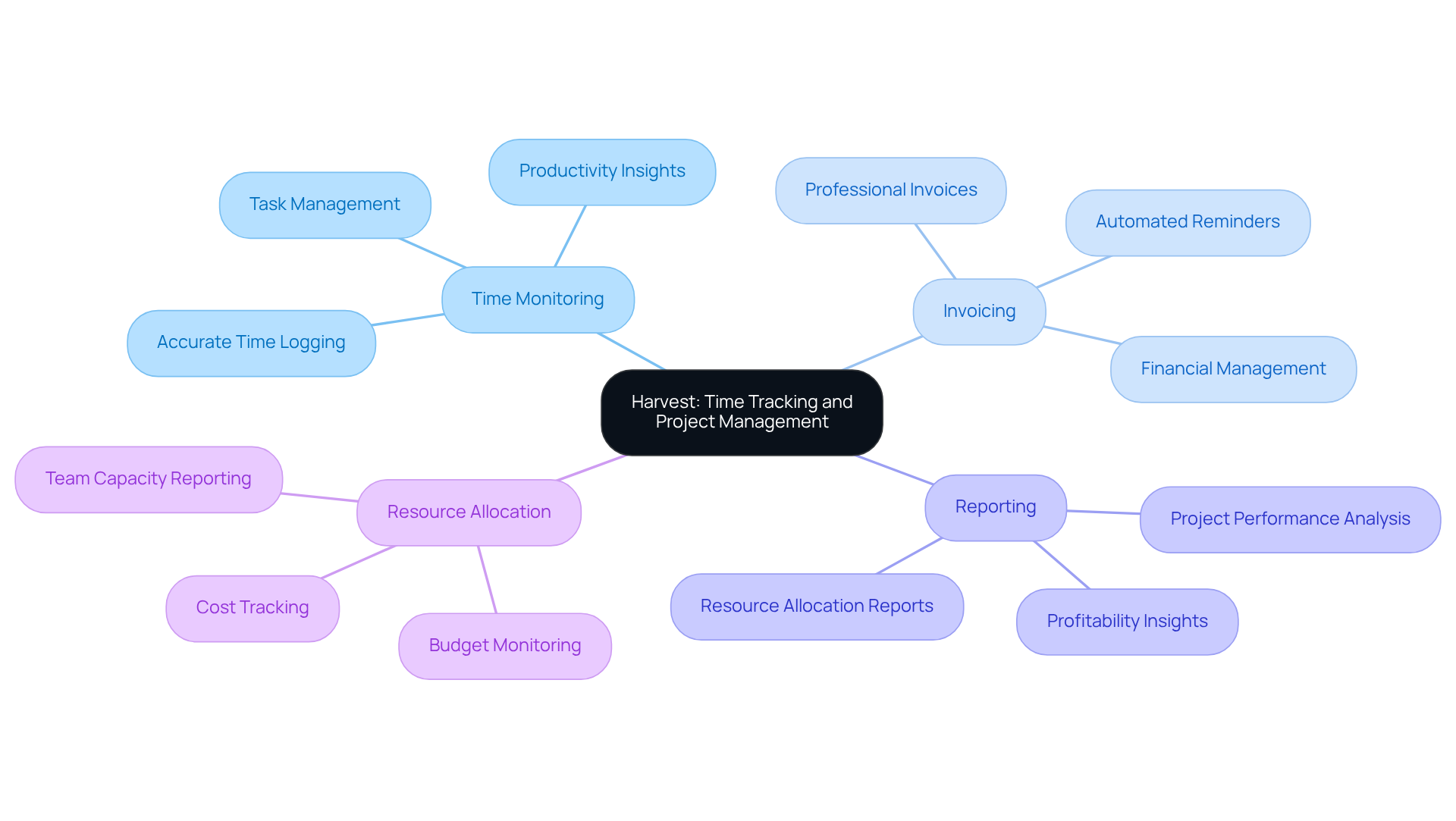
Conclusion
The landscape of remote work is evolving rapidly, and utilizing the right tools can be a game changer for startups aiming for success. This article has highlighted ten essential remote work tools that not only streamline operations but also enhance productivity and collaboration among teams. From task management with Casy to seamless communication via Slack, each tool plays a pivotal role in ensuring that startups can navigate the complexities of remote work effectively.
Key insights include:
- The automation capabilities of Casy, which reduce administrative burdens.
- The real-time communication features of Slack that foster agility.
- The interactive collaboration provided by Zoom and Miro.
- Tools like Asana, Google Drive, Trello, Notion, Microsoft Teams, and Harvest that offer diverse functionalities catering to various aspects of project management, document sharing, and time tracking, ultimately driving organizational efficiency.
Embracing these remote work tools is not merely a trend but a strategic necessity for startups looking to thrive in a competitive environment. By leveraging these technologies, teams can enhance communication, streamline workflows, and boost overall productivity. The call to action is clear: invest in these essential tools to empower your startup, foster innovation, and ensure sustainable growth in the dynamic landscape of remote work.
Frequently Asked Questions
What is Casy and how does it enhance team productivity?
Casy is an automated task management tool that integrates with chat platforms like Slack and Telegram. It captures essential information from discussions, generates assignments, and establishes deadlines automatically, reducing administrative burdens and allowing teams to focus on their core tasks.
What features does Casy offer to improve task management?
Casy offers planning and task categorization features that help teams maintain visibility and prioritize effectively, leading to improved workflow efficiency and a greater focus on innovation.
How does Casy help remote teams?
By automating task management, Casy empowers remote teams to achieve greater success in their projects, making it an essential tool for startups navigating remote work challenges.
What are the benefits of using Slack for remote teams?
Slack facilitates real-time communication through channels and direct messages, integrates with over 2,400 third-party applications, and improves collaboration while reducing email clutter. It also enhances organizational transparency and has demonstrated a significant ROI for organizations.
How does Slack support effective communication?
Slack offers features like file sharing, searchable message history, and customizable notifications, ensuring that all team members stay aligned and informed.
What strategies can teams use to manage notification fatigue in Slack?
Teams can utilize features like 'Do Not Disturb' mode to respect personal time and reduce notification fatigue, promoting a more productive work environment.
What role does Zoom play in remote collaboration?
Zoom is a video conferencing platform that enables meetings, webinars, and collaborative sessions, promoting interactive discussions through features like screen sharing and breakout rooms.
How has the COVID-19 pandemic affected the use of video conferencing tools like Zoom?
The pandemic accelerated the adoption of video conferencing, with many companies utilizing it for the first time. It became essential for maintaining team culture and alignment on objectives during remote work transitions.
What are the benefits of video conferencing for companies?
94% of companies recognize productivity as the primary benefit of video conferencing, which also helps users feel more connected, enhancing team dynamics and collaboration.
What is the projected growth of the video conferencing market?
The video conferencing market is projected to reach $13.82 billion by 2023, highlighting its critical role in facilitating communication and collaboration in the startup landscape.




